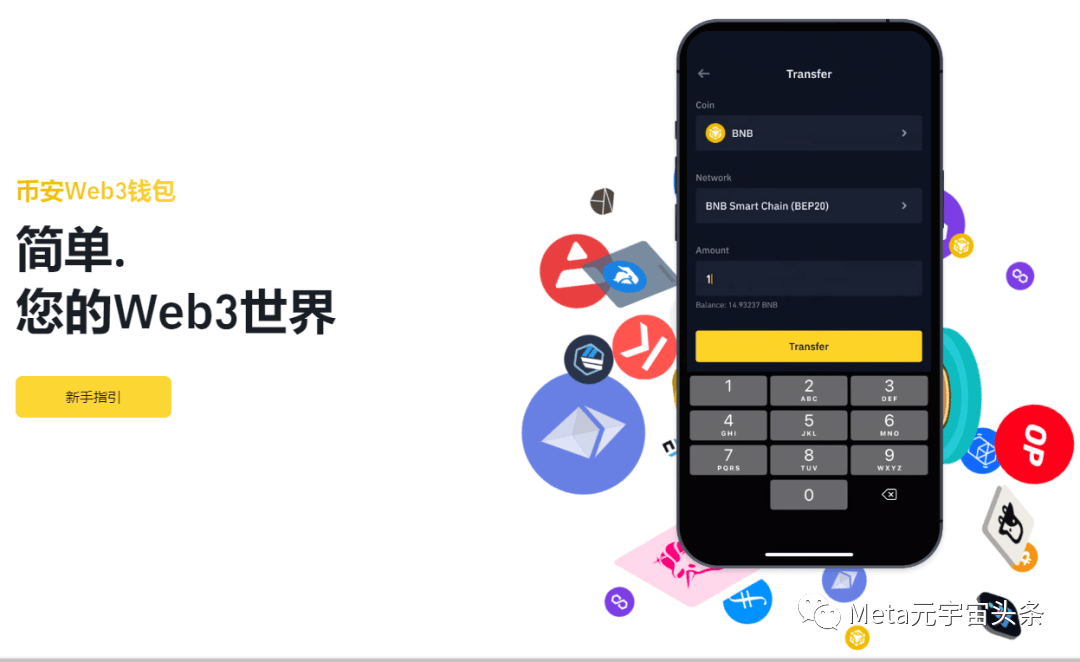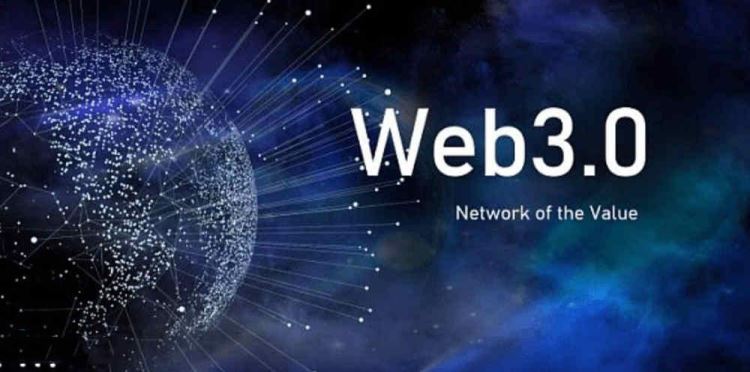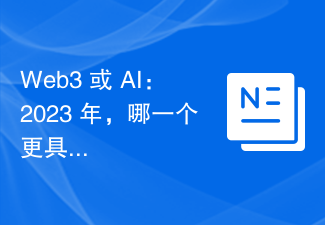 web3.0
web3.0 Why Bridging Services May Soon Become Obsolete: The Rise of Bridgeless Cross-Chain Technology
Why Bridging Services May Soon Become Obsolete: The Rise of Bridgeless Cross-Chain TechnologyOver $85 million worth of cryptocurrencies were compromised via hacks on bridging services in the first half of 2024

As blockchain bridges continue to experience large-scale hacks, there may be a better solution to the interoperability challenges across the blockchain industry.
Over $85 million in cryptocurrencies were compromised via hacks on bridging services in the first half of 2024, according to Hacken’s Web 3 Q1 and Q2 reports. While this is a sharp fall from the full-year losses across bridging services in 2023 – $337.72 million – the security concerns around bridges are persistent.
Could there be better solutions to blockchain interoperability and improved cross-chain technologies than bridges? And if so, how do these technologies aim to solve the issues facing bridging services?
In this piece, we delve deeper into the problems that traditional blockchain bridges face, the rise of new and improved cross-chain technologies and how they enhance blockchain interoperability and communication.
Why Bridging Services May Soon Become Obsolete
Blockchain bridges, or application-specific cross-chain bridges, were introduced in 2021 at the height of the DeFi boom, enabling communication between blockchains. These protocols are designed to facilitate the transfer of assets and information from one chain to another. They were created to solve the issue of interoperability and the siloed nature of blockchains.
Over the years, chain-specific bridges have emerged as a vital solution to value transfer and communication between blockchains. These protocols function by locking users’ tokens on the source chain and then minting intermediate tokens on the destination chain. However, bridges have proven fragile, as explained above, with major hacks and theft of users’ funds hindering the solutions they provide.
Adding to hacks and security concerns, application-specific bridges also suffer from the following challenges:
The complexity and security concerns surrounding current application-specific bridges make it difficult for the innovation to be widely accepted. Bridges can only be a partial solution to the growing Web 3 interoperability challenges. But for the growing blockchain and DeFi landscape, cross-chain solutions not only need to be efficient but also allow seamless capital flow for all users.
Zeus Network, a bridgeless platform utilizing the Solana blockchain aims to offer better solutions for interoperability between blockchains. The platform leverages Solana for its lightning-quick, affordable, and reliable qualities as well as its Zeus Layer, a pluggable and programmable network of nodes on the Solana Virtual Machine (SVM), to make liquidity available on all blockchain networks – the source and destination chains.
The Rise of Bridgeless Cross-Chain Technology
Zeus Network is a pioneer in bringing bridgeless cross-chain technology to the DeFi landscape. The restricted interoperability of DApps with particular blockchain networks results in fragmented liquidity, less innovation and less-than-ideal user experiences. Zeus Network aims to solve these challenges by providing a permissionless and bridgeless layer, starting with a connection between Bitcoin and Solana. The platform leverages the robust security of Bitcoin and the effectiveness, speed and low transaction fees of Solana to allow DApps on Solana to access the vast liquidity pool of Bitcoin.
Developers can create a wide range of applications on Zeus Network and link them to Solana and Bitcoin, unlocking a world of possibilities, from DeFi apps to secure and efficient financial services. Zeus has developed a monolithic architecture that consolidates execution, data availability, and consensus within a single framework, enabling seamless integration and a unified user experience throughout its ecosystem.
So how does the bridgeless architecture design work?
First, chain-agnostic transactions (either on Bitcoin or Solana) are proposed by Zeus Nodes and then submitted to Zeus program states. The transactions are then signed and aggregated on the Zeus Layer via the Zeus Programming Library (ZPL), a set of SVM programs built on Solana Virtual Machine. ZPL is a verifiable interface for developers to build on top of Zeus Network. The signed transactions are then broadcast to the destination chain.
To protect the transactions and secure cross-chain communication, honest Zeus Nodes can simply submit fraud proofs to slash malicious ones. This ensures that cross-chain communication remains secure.
Berbeza dengan jambatan, Zeus Network memastikan tiada pihak yang boleh mempermainkan sistem, menggodam kawalan berpusat atau mengeksploitasi kontrak pintar kerana anda boleh dipotong. Selain itu, proses pemindahan aset daripada Bitcoin atau Solana adalah mudah dan pantas, dengan setiap langkah dijalankan pada satu platform.
Kata Akhir
Keperluan untuk saling kendali yang lebih baik dan teknologi rentas rantaian adalah penting untuk pertumbuhan keseluruhan industri blockchain. Walaupun jambatan blockchain tradisional telah memainkan peranan penting dalam membolehkan komunikasi silang rantai, kelemahan dan ketidakcekapan mereka menyerlahkan keperluan untuk penyelesaian yang lebih maju. Kemunculan platform tanpa jambatan seperti Zeus Network mewakili lonjakan ketara ke hadapan dalam kebolehkendalian blokchain.
Alternatif yang diperkemas, cekap, pantas dan kos rendah seperti Zeus Network boleh menjadi kunci untuk membuka kunci kecairan tidak aktif merentas rangkaian blockchain. Ini boleh menjadi peningkatan standard yang berpotensi baharu untuk masa depan kewangan terdesentralisasi dan teknologi rentas rantai.
The above is the detailed content of Why Bridging Services May Soon Become Obsolete: The Rise of Bridgeless Cross-Chain Technology. For more information, please follow other related articles on the PHP Chinese website!
 WEB3是什么意思Mar 12, 2024 pm 02:18 PM
WEB3是什么意思Mar 12, 2024 pm 02:18 PMWeb3.0是指第三代互联网,协议互联网,核心为:用户创造、用户所有、用户控制、协议分配利益,利用区块链的协议创造与自动执行的技术,即通过智能合约,权利与价值的分配协议可以不通过第三方,即得到高效、准确、可信的执行,并且全过程可审计。
 币安Binance发布Web3钱包,一文详细介绍其亮点Jan 18, 2024 pm 04:45 PM
币安Binance发布Web3钱包,一文详细介绍其亮点Jan 18, 2024 pm 04:45 PM快速导读:11月8日消息,币安区域市场总负责人RichardTeng在币安的旗舰活动伊斯坦布尔币安区块链周中宣布推出自我托管的币安Web3钱包,旨在提供用户简单、安全、一站式的Web3体验。该钱包嵌入在币安App中,为用户提供无需复杂注册或担忧助记词丢失的方式,探索Web3世界。用户可以方便地进行多种代币兑换、访问各种DApp、快速转账资金,并利用加密货币赚取收益。币安,全球领先的区块链生态系统和虚拟资产交易所,近日推出了一款名为币安Web3钱包的产品。该钱包旨在满足用户对简单、方便和安全的We
 Web3安全警示丨“蹭热点”须谨慎:详解OrdiZK退出骗局Mar 14, 2024 pm 07:37 PM
Web3安全警示丨“蹭热点”须谨慎:详解OrdiZK退出骗局Mar 14, 2024 pm 07:37 PM3月5日,CertiK安全团队发现OrdiZK精心策划了一场退出骗局。在这起事件中,诈骗者使用了囤积交易手续费、恶意抛售以及滥用管理权等方式窃取了约140万美元用户资金。该事件是2024年发生的第6起退出骗局。迄今为止,2024年退出骗局造成的总损失已超过6400万美元。事件概况OrdiZK声称自己是以太坊网络和比特币网络之间的隐私跨链桥。据他们已删除的公告称,他们还声称可以实现Solana和Avalanche等其他网络之间的跨链操作。该项目的部署者已经建立了两个OZK代币合约和多个质押合约。初
 web3有哪些公链Oct 08, 2024 pm 08:45 PM
web3有哪些公链Oct 08, 2024 pm 08:45 PMWeb3 作为互联网的新阶段,建立在区块链的去中心化基础之上。公链作为 Web3 的底层架构,提供了安全且透明的数据记录和管理方式。其中,以太坊因其智能合约平台而备受瞩目,而币安智能链则以高性能和低成本交易著称。波卡是一个多链网络,促进了区块链之间的连接和通信。索拉纳以其快速的可扩展交易而闻名,而卡尔达诺则以其学术支持的安全性及可扩展性备受认可。
 什么是web3?大白话解析web3形态Aug 03, 2022 am 10:03 AM
什么是web3?大白话解析web3形态Aug 03, 2022 am 10:03 AM关于 web3 是什么,可能每篇文章介绍的都不一样,好像现在大家对 web3 是什么还没达成共识。本篇文章,我会通过大白话来介绍我认可的 web3 形态,极大解决了我们的痛点,我愿称之为未来!
 ChainCatcher 和 ZAN、Artela 联合举办的“聚焦 Web3 基础设施,解锁 DApp 应用新场景” 活动已圆满落幕Mar 29, 2024 pm 01:51 PM
ChainCatcher 和 ZAN、Artela 联合举办的“聚焦 Web3 基础设施,解锁 DApp 应用新场景” 活动已圆满落幕Mar 29, 2024 pm 01:51 PM3月26日,ChainCatcher联合ZAN(蚂蚁数科旗下Web3品牌)、Artela在深圳举办的主题为“聚焦Web3基础设施,解锁DApp应用新场景”线下交流活动已圆满落幕。这次活动吸引了上百名Web3开发者、项目方及用户前来观摩与学习。其中,ZAN和Artela在会场布置了展台,并为参会用户提供了品牌定制服务饰、帽子配饰、餐食等礼品供参会用户领取。在现场活动中,ZAN公司的CTOEthan、Layer1公链Artela公司的CTOCP、社交基础设施公司UXLINK的联合创始人、加密项目数据
 Web3主导币有哪些?哪些有最大发展前景?Jan 26, 2024 pm 09:00 PM
Web3主导币有哪些?哪些有最大发展前景?Jan 26, 2024 pm 09:00 PMWeb3是一个以区块链为底层技术的去中心化系统,Web3又称Web3.0是第三代互联网,也是一个基於区块链技术的去中心化系统,其核心是利用区块链技术、加密货币、非同质化代币(NFT)将权利交还给用户。而随着Web3迎来热议,Web3概念币种也随之受到大量的关注,其中最关心的就是Web3概念龙头币有哪些?根据资料分析来看,龙头币主要是DOT、FIL以及GPRT,除了龙头币,投资者对Web3概念哪些最有潜力?也很关心,接下来小编就为大家详细说一说。Web3概念龙头币有哪些?Web3概念龙头币有DOT
 Web3 或 AI:2023 年,哪一个更具颠覆性?Sep 22, 2023 pm 06:13 PM
Web3 或 AI:2023 年,哪一个更具颠覆性?Sep 22, 2023 pm 06:13 PM在2021年听到Web3有点像今天听到人工智能……是这样吗?这些突破性技术从根本上彻底改变了世界,虽然有些业务方面可以免于自动化和去中心化,但这两种技术仍然可以被视为传统业务的颠覆者。Web3市场的全球价值在2021年为32亿美元,但在2023年2月增长到275亿美元,而人工智能市场从2022年的1,423.2亿美元增长到2023年的2,073亿美元。准备好被这些技术如何改变未来。颠覆性技术的重要性互联网泡沫等颠覆性技术使纳斯达克指数从1995年到2000年从不足1,000点上涨至超过5,048

Hot AI Tools

Undresser.AI Undress
AI-powered app for creating realistic nude photos

AI Clothes Remover
Online AI tool for removing clothes from photos.

Undress AI Tool
Undress images for free

Clothoff.io
AI clothes remover

AI Hentai Generator
Generate AI Hentai for free.

Hot Article

Hot Tools

PhpStorm Mac version
The latest (2018.2.1) professional PHP integrated development tool

Safe Exam Browser
Safe Exam Browser is a secure browser environment for taking online exams securely. This software turns any computer into a secure workstation. It controls access to any utility and prevents students from using unauthorized resources.

SublimeText3 English version
Recommended: Win version, supports code prompts!

Dreamweaver CS6
Visual web development tools

SublimeText3 Mac version
God-level code editing software (SublimeText3)





